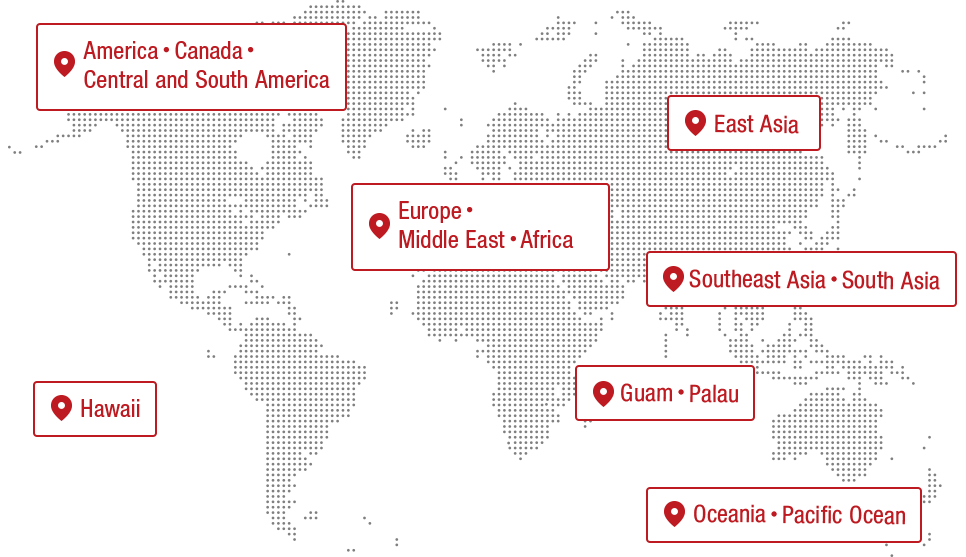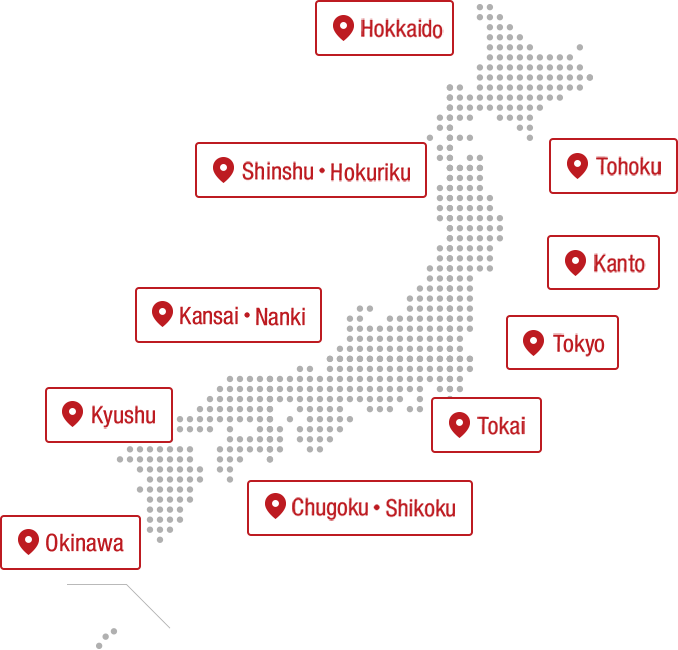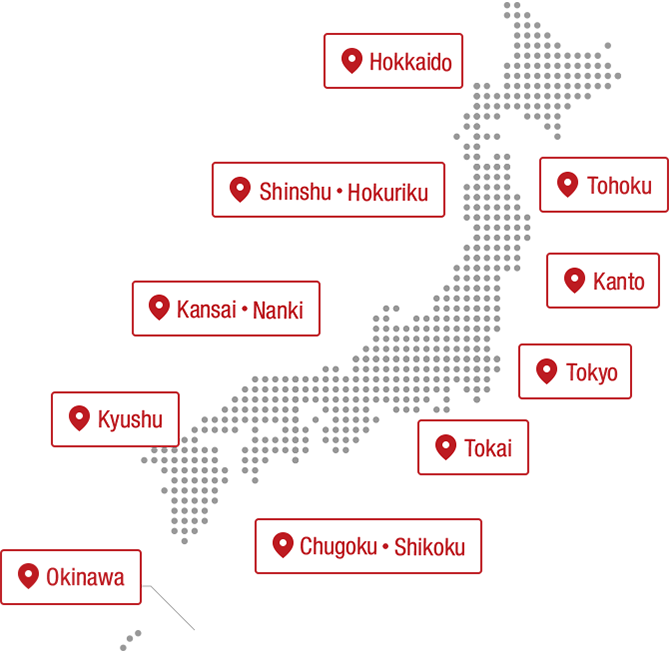We have prepared a wide range of options for each area, from north to south, and from sweets to home cooking and delicacies. Why not search for your favorite experience menu for the day when you can travel freely again?
INDEX
- [Akita] Enjoy the local No. 1 "Kiritanpo" in a hotpot or miso-grilled dish
- [Nagano] Learn the essence of soba-making in Togakushi, one of Japan's leading soba places
- [Ishikawa] Experience making three kinds of Japanese sweets using Nerikiri-an
- [Fukuoka] Make your own "mentaiko" by choosing your favorite chili peppers and alcohol
- [Okinawa] Cooking Okinawan cuisine while touring the market and learning about ingredients
[Akita] Enjoy the local No. 1 "Kiritanpo" in a hotpot or miso-grilled dish
In Akita, a rice-producing region famous for "Akita Komachi," kiritanpo nabe, a hotpot of rice cooked like ohagi, is a famous local dish. The "Authentic Odate Kiritanpo Grand Prix" has been held every year since 2015 in Odate city in the north of the prefecture, and the maker that won the first and second tournaments is "Beniyama Kiritanpo Kobo." Here, you can experience making your own kiritanpo.

There are various theories about the origins of Kiritanpo, but one says it has its roots in Matagi hunters. It is said that it became popular when hunters would skewer rice balls on sticks and roast them to keep them warm when they went hunting. "Tanpo" refers to the short tip of a spear made of rolled cotton that is attached to a training spear, and it was named after the shape of the spear.

The uncut version is called "Tanpo", and "Miso-tsuke-tanpo", which is eaten with miso, is also popular locally. Also, the version that is simply mashed and rolled into balls is called "Damakomochi", which is more popular in the central part of the prefecture and the coastal Noshiro-Yamamoto region.
The experience at the workshop lasts about two hours. First, you will mash the rice while listening to the lecture of the instructor and make rice ball-sized rice balls. The rice balls are spread evenly on the skewers for kiritanpo and grilled over charcoal. Next, you will sample the aforementioned "miso-tsuketanpo." The fragrant rice and sweet miso match perfectly, making for a surprisingly delicious experience.


Next comes the making of the hotpot. The cooked tanpo and vegetables are cut and then the local specialty Hinai Jidori chicken and special soup are added to finish it off. Once the flavors have soaked into the kiritanpo, it's time for the long-awaited tasting. The broth from Hinai Jidori chicken, one of Japan's three great local chickens alongside Nagoya Cochin and Satsuma Jidori chicken, is exceptionally delicious.


It's conveniently located just a four-minute walk from Odate Station, and is recommended as a simple and satisfying craft experience.
Beniyama Kiritanpo Handmade Experience
| address | : | 2-16-25 Onarimachi, Odate City, Akita Prefecture Beniyama Kiritanpo Koubou 2nd floor |
|---|---|---|
| phone | : | 0186-59-7773 |
| Experience Hours | : | 10:00-14:00 (reservations required) |
| Closed Day | : | Irregular holidays |
| web | : | https://beniyamakiritanpo.com/handmade/ |
[Nagano] Learn the essence of soba-making in Togakushi, one of Japan's leading soba places
Soba is a dish that can be considered soul food for the Japanese, and Nagano's "Togakushi soba," Shimane's "Izumo soba," and Iwate's "Wankosoba" are particularly famous as Japan's three great soba dishes. Nagano is particularly famous for its buckwheat, and Togakushi is known as one of the best soba places in the prefecture. On-site is the "Togakushi Soba Museum Tonkururin," where you can also experience making soba noodles.
![Image 1: [Nagano] Learn the essence of soba-making in Togakushi, one of Japan's leading soba restaurants](https://d1uzk9o9cg136f.cloudfront.net/f/16783489/rc/2021/01/19/4f75869a4aea59dd6e07b6783528b62b183281dc.jpg)
The history of Togakushi soba dates back to the Heian period, when Shinshu buckwheat flour was prized as a portable food for mountain ascetics. In the Edo period, the technique of "sobakiri" (cutting soba into small pieces) was transmitted from Kan'ei-ji Temple in Ueno to what was then Togakushi-san Kenko-ji Temple. Until then, soba was mainly eaten as "sobagaki," but eating it as noodles became more widespread. After that, it spread from being a treat for entertaining guests to being a common dish among the general public, and continues to be so today.
![Image 2: [Nagano] Learn the essence of "soba making" in Togakushi, one of Japan's leading soba places](https://d1uzk9o9cg136f.cloudfront.net/f/16783489/rc/2021/01/19/36998eea337416895118741e26e420df9c7661c9.jpg)
The reason why buckwheat is so high quality lies in the environment. In areas over 1,000 meters above sea level, fog is likely to occur, which is ideal for growing buckwheat, and the clear meltwater containing the blessings of the mountains produces refreshing buckwheat. Togakushi soba is characterized by the traditional method of rolling out the noodles into a round shape using a single stick. And it is served in a "bocchimori" style, with bite-sized noodles piled into five bundles.
![Image 3: [Nagano] Learn the essence of "soba making" in Togakushi, one of Japan's leading soba restaurants](https://d1uzk9o9cg136f.cloudfront.net/f/16783489/rc/2021/01/19/cf1ee3e536a837ae44598630be5a92ef1963b5b9.jpg)
The soba-making experience lasts about an hour, and an expert will give you a lecture from the basics. First, mix the buckwheat flour with hot water. Mix it with wheat flour and knead it, remove the air, then roll it out by hand, and then roll it out with a rolling pin. The dough is then folded and cut, boiled, and rinsed in cold water to complete the experience. The aroma and taste of the freshly made, cut, and boiled soba that you made yourself is exceptionally delicious.
![Image 4: [Nagano] Learn the essence of "soba making" in Togakushi, one of Japan's leading soba places](https://d1uzk9o9cg136f.cloudfront.net/f/16783489/rc/2021/01/19/e70992e162d22b1d41beef5d2250ffbd7478563b.jpg)
![Image 5: [Nagano] Learn the essence of "soba making" in Togakushi, one of Japan's leading soba restaurants](https://d1uzk9o9cg136f.cloudfront.net/f/16783489/rc/2021/01/19/ca6b1ebaeb44e26170b70de92b3bdc5bb3c1d19c.jpg)
As it is a museum, the facility also has an exhibition room where you can learn about the history and culture of soba, as well as a souvenir corner. If you are a soba fan, it is definitely worth a visit.
Togakushi Soba Museum Tonkururin
| address | : | 3018 Togakushi, Nagano City, Nagano Prefecture |
|---|---|---|
| phone | : | 026-254-3773 |
| Experience Hours | : | 10:00-15:00 (reservations required) |
| Closed Day | : | Wednesday |
| web | : | http://www.togakushi-tq.jp/ |
[Ishikawa] Experience making three kinds of Japanese sweets using Nerikiri-an
Kanazawa once flourished as the home of the Kaga Domain, and is now bustling as the center of Ishikawa Prefecture. There are many sightseeing spots, such as castles and other traditional architecture, as well as art museums, and there is no shortage of cultural activities. One recommended experience in Kanazawa is making Japanese sweets. Here we will introduce a plan held at the Ishikawa Prefectural Tourist and Products Center, a commercial facility that brings together famous confectioneries from long-established stores and traditional crafts.
![Image 1: [Ishikawa] Experience making three kinds of Japanese sweets using Nerikiri-an](https://d1uzk9o9cg136f.cloudfront.net/f/16783489/rc/2021/01/19/94874182c3bd4280cf9576765a6ac1b527e1ee2c_xlarge.jpg)
Kanazawa is famous for Japanese sweets, along with Kyoto and Matsue in Shimane. The background to this is the rich tea ceremony culture that developed along with the prosperity of the Maeda clan of the Kaga domain. The founder of the domain, Maeda Toshiie, and the second lord, Toshinaga, were direct disciples of Sen no Rikyu, and subsequent lords also encouraged the tea ceremony. As a result, the demand for sweets, which are essential to the tea ceremony, increased and the techniques for making them improved.
![Image 2: [Ishikawa] Experience making three kinds of Japanese sweets using Nerikiri-an](https://d1uzk9o9cg136f.cloudfront.net/f/16783489/rc/2021/01/19/2d755f432c34494a2c2d9f392092855f81bee705.jpg)
![Photo 3: [Ishikawa] Experience making three kinds of Japanese sweets using Nerikiri-an](https://d1uzk9o9cg136f.cloudfront.net/f/16783489/rc/2021/01/19/629a5d16cd13ef0eb370399c30d34e9a164d1bb4.jpg)
The experience at the Tourist Products Center will be taught by a long-established Japanese confectioner from a local shop. The confectioners take turns to teach, so you can enjoy different flavors each time. You will use a spatula, tea towel, and sieve to shape the nerikiri-an paste used at tea ceremonies, and turn it into delicate and adorable seasonal top-quality confections.
![Photo 4: [Ishikawa] Experience making three kinds of Japanese sweets using Nerikiri-an](https://d1uzk9o9cg136f.cloudfront.net/f/16783489/rc/2021/01/19/a61c1695297bf5dc0130294860577230a7234884_xlarge.jpg)
Even if it's your first time, you can feel at ease. Not only are samples provided, but a TV monitor will show a close-up of the craftsman at work, so you can learn by watching every detail. After the experience, you can take home three Japanese sweets you made and one souvenir from the craftsman, for a total of four sweets, so it's fun to compare the tastes.
![Photo 5: [Ishikawa] Experience making three kinds of Japanese sweets using Nerikiri-an](https://d1uzk9o9cg136f.cloudfront.net/f/16783489/rc/2021/01/19/35ba25826eb5ed884b7c1cb5bb7cec1318e0df4d_xlarge.jpg)
Another attractive feature is that the journey takes only 30 to 40 minutes. The Ishikawa Prefectural Tourist and Products Center is located just a two-minute walk from one of Kanazawa's most popular tourist spots, Kenrokuen Garden, so if you're visiting Kanazawa, why not plan to visit both places together?
Ishikawa Prefectural Tourist and Products Center
| address | : | 2-20 Kenrokucho, Kanazawa City, Ishikawa Prefecture |
|---|---|---|
| phone | : | 076-222-7788 |
| Experience Hours | : | Weekdays from January to November: 13:00-13:40 (except Tuesdays in January and February), Saturdays, Sundays and holidays: 10:00-15:10, Saturdays, Sundays, Mondays and holidays in December: 13:00-13:40 (reservations required) |
| Closed Day | : | Irregular holidays (check website), Tuesdays from December to February |
| web | : | https://kanazawa-kankou.jp/ |
[Fukuoka] Make your own "mentaiko" by choosing your favorite chili peppers and alcohol
Hakata is the home of mentaiko, which is widely enjoyed in Japan as a side dish for rice or as a seasoning for pasta. Hakata Haneya Souhonke, which sells souvenirs and operates restaurants in Hakata, hosts the Mentaiko Dojo, where you can see the manufacturing process and make your own original spicy mentaiko.
![Image 1: [Fukuoka] Make your own "mentaiko" by choosing your favorite chili peppers and alcoholic beverages](https://d1uzk9o9cg136f.cloudfront.net/f/16783489/rc/2021/01/19/1e56eedb8c0f57156334f406bb2f7e85dccc930f.jpg)
Mentaiko has its roots in Korea. Mentaiko is a product of salted pollock roe, myeongranjo, which was eaten locally, but was adapted to suit the Japanese palate. Pollock is called myeongtae in Korean, and mentaiko was named after its eggs, which are called roe. It first went on sale in 1949.
Until the 1970s, mentaiko was strongly associated in the Kanto region with being a luxury item sold as a souvenir from Kyushu, but from the 1980s its distribution gradually expanded and it began to be seen all over the country.
![Image 2: [Fukuoka] Make your own "mentaiko" by choosing your favorite chili peppers and alcoholic beverages](https://d1uzk9o9cg136f.cloudfront.net/f/16783489/rc/2021/01/19/980befd136b8aff0688415e5ca76fc7fc55354ac.jpg)
Mentaiko Dojo can be attended by two or more people. First, salted cod roe is placed in a bag with kelp, and then chili peppers are sprinkled on top to adjust the spiciness, and two types of chili peppers are sprinkled on top to add flavor. Once there, you can sample the mentaiko at a basic level of spiciness, and then you can adjust the spiciness based on that taste, or add yuzu to taste, before moving on to the final process.
![Photo 3: [Fukuoka] Make your own "mentaiko" by choosing your favorite chili peppers and alcoholic beverages](https://d1uzk9o9cg136f.cloudfront.net/f/16783489/rc/2021/01/19/6e2589889bba2fd3c5d7926eb18019b2e3f5b93d_xlarge.jpg)
Finally, add your choice of sake, wine, brandy, or awamori along with the dashi stock to complete the dish. By the way, the best time to eat your homemade mentaiko is after letting it mature in your refrigerator at home for five days. It will taste even better if you reminisce about your travels while eating it.
![Image 4: [Fukuoka] Make your own "mentaiko" by choosing your favorite chili peppers and alcoholic beverages](https://d1uzk9o9cg136f.cloudfront.net/f/16783489/rc/2021/01/19/b5ea21fcfeabbcdeb3c5284ac7b50ac756f05867_xlarge.jpg)
The experience takes about 30 to 40 minutes. Hakata Haneya Souhonke has over 300 carefully selected souvenirs, so you're sure to enjoy shopping. It's also conveniently located about 12 minutes by car from Fukuoka Airport and about 20 minutes by car from JR Hakata Station.
Hakata Haneya Souhonke
| address | : | Fukuoka City, Fukuoka Prefecture, Hakata Ward, Tsukiguma 6-23-7 |
|---|---|---|
| phone | : | 092-576-9010 |
| Experience Hours | : | 9:00-17:40 (reservation required) |
| Closed Day | : | none |
| web | : | http://hakatahaneya.com/ |
[Okinawa] Cooking Okinawan cuisine while touring the market and learning about ingredients
One of Okinawa's distinctive features is its unique food culture, nurtured by the subtropical climate and sea. The "Cooking Experience & Market Walking Tour" offered by the restaurant "Taste of Okinawa" allows you to learn about the history and charm of Okinawa while also experiencing the process of making food.
![Image 1: [Okinawa] Cooking "Okinawan cuisine" while touring the market and learning about ingredients](https://d1uzk9o9cg136f.cloudfront.net/f/16783489/rc/2021/01/19/99c7e8aa6821b759478ab720d7fc061ce173ced4_xlarge.jpg)
One of the themes is the food culture of longevity. The point is to learn the secrets of longevity, along with ingredients and cooking methods, for the many centenarians who live to be over 100 years old. The program lasts about three hours. First, you will tour the nearby public market with the instructor, and then you will have a cooking experience in the studio.
![Image 2: [Okinawa] Cooking "Okinawan cuisine" while touring the market and learning about ingredients](https://d1uzk9o9cg136f.cloudfront.net/f/16783489/rc/2021/01/19/ffaa2b96b20edccdc996a2a9bd1366fd187f3208_xlarge.jpg)
Okinawa cuisine is made using a lot of tropical vegetables and seafood, seaweed, tofu, pork, etc., as well as imported kelp and Chinese chikuwa. As it is close to China, the idea that food is medicine is deeply rooted, and healthy natural ingredients and decoctions are often used, making it well-balanced in nutrition.
![Image 3: [Okinawa] Cooking "Okinawan cuisine" while touring the market and learning about ingredients](https://d1uzk9o9cg136f.cloudfront.net/f/16783489/rc/2021/01/19/5425c2a27726b86e23d7981e5bf01eb53d1805ce_xlarge.jpg)
In the studio, we will make 3-4 traditional Okinawan dishes such as appetizers, main dishes, soups, and desserts. For example, goya chanpuru, Okinawa soba, rafute, aaasu soup, sata andagi, etc. The point is to make traditional home-style dishes rather than postwar imported dishes containing spam or taco rice.
![Image 4: [Okinawa] Cooking "Okinawan cuisine" while touring the market and learning about ingredients](https://d1uzk9o9cg136f.cloudfront.net/f/16783489/rc/2021/01/19/df20ca735be6d4ca6c816602901a08e912444dca_xlarge.jpg)
![Image 5: [Okinawa] Cooking "Okinawan cuisine" while touring the market and learning about ingredients](https://d1uzk9o9cg136f.cloudfront.net/f/16783489/rc/2021/01/19/adc6656bae4be9d21b4c48a7e33c34199eaf8af3.gif)
Currently, it is very popular among tourists, and the participants are a wide variety of people, from high school students to the elderly. After cooking in a fun and lively team, the participants naturally become closer as they sample the food. After this experience, your love for Okinawan cuisine will surely grow even stronger.
Taste of Okinawa
| address | : | 1-6-21 Tsuboya, Naha City, Okinawa Prefecture |
|---|---|---|
| phone | : | 098-943-6313 |
| Experience Hours | : | 10:30~13:30、15:30~18:30 |
| Closed Day | : | Monday |
| web | : | https://tasteof.okinawa/ |
Tasting the local cuisine is a special experience, but if you learn about it while you cook it, you can also learn about the culture and history, and your memories of the trip will be even more vivid. It's an activity that stimulates the five senses by seeing, listening, making and eating. If you have an insatiable desire to explore food, this is a must-try.
The contents published are accurate at the time of publication and are subject to change.











